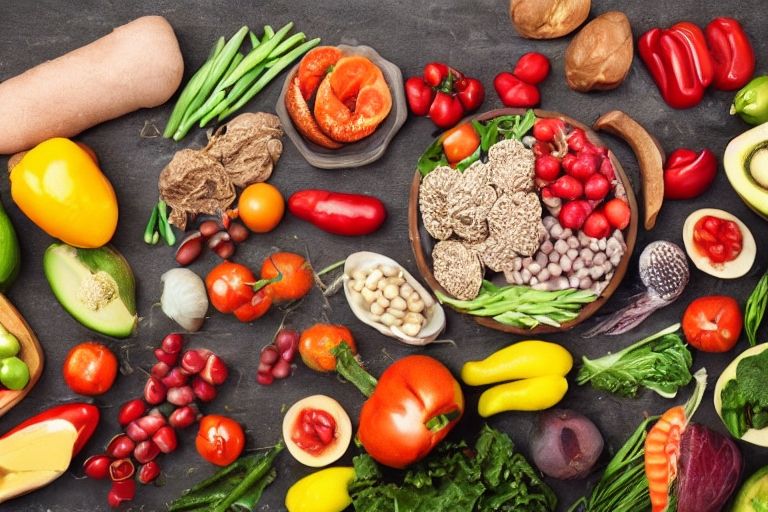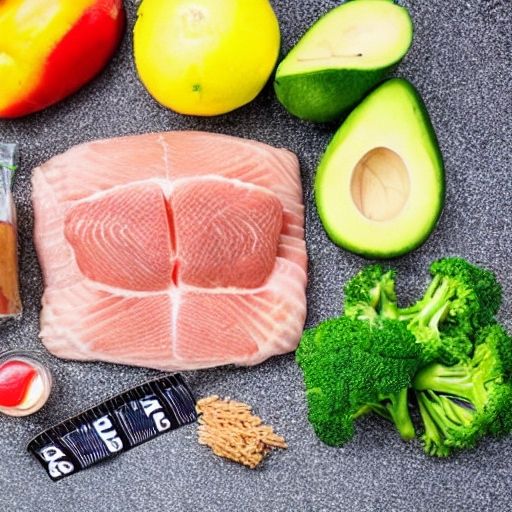Eat Smart, Get Strong: Diet Plans for Weight Loss and Muscle Definition

Eat Smart, Get Strong: Diet Plans for Weight Loss and Muscle Definition
When it comes to achieving our fitness goals, we often hear the old adage, “abs are made in the kitchen.” A healthy and balanced diet plays a vital role in weight loss and muscle definition. While exercise is essential, it is what we put into our bodies that can make or break our progress. If you’re looking to shed unwanted pounds and sculpt your muscles, here are some diet plans to help you eat smart and get strong.
1. Macronutrient Balance:
A well-balanced diet requires an optimal ratio of macronutrients: proteins, carbohydrates, and fats. Protein is crucial for muscle repair and growth, while carbohydrates provide energy and fats support hormone regulation. Aim to consume lean protein sources like chicken, fish, tofu, and legumes. Incorporate complex carbohydrates such as whole grains, fruits, and vegetables, and don’t shy away from healthy fats found in nuts, avocados, and olive oil.
2. Caloric Deficit:
To lose weight, you need to create a caloric deficit, meaning you consume fewer calories than you burn. However, it’s essential to strike the right balance to avoid nutrient deficiencies or a slowed metabolism. Aim for a moderate caloric deficit of around 500-700 calories per day to lose 1-2 pounds per week. This can be achieved by reducing portion sizes and choosing nutrient-dense, low-calorie foods.
3. High Protein, Low Carbohydrate:
This diet plan focuses on high protein and low carbohydrate intake. Protein helps preserve lean muscle mass while promoting fat loss, and reducing carbohydrates can lead to decreased insulin levels and increased fat burning. Include protein-rich foods such as lean meats, eggs, dairy products, and high-quality protein supplements. Opt for low glycemic index carbohydrates like whole grains, nuts, and non-starchy vegetables.
4. Intermittent Fasting:
Intermittent fasting is an eating pattern that cycles between periods of fasting and eating. This approach can help with weight loss and muscle definition, as it reduces overall calorie intake and increases fat burning. A popular method is the 16/8, which involves fasting for 16 hours and restricting eating within an 8-hour window. During the eating period, focus on balanced meals that contain all the necessary nutrients.
5. Clean Eating:
Clean eating emphasizes whole, unprocessed foods and eliminates refined sugars and artificial additives. This diet plan promotes natural weight loss and muscle definition while improving overall health. Incorporate fresh fruits and vegetables, lean proteins, whole grains, and healthy fats into your meals. Avoid processed and packaged foods, sugary drinks, and excessive amounts of salt.
Remember, everyone’s body is unique, so it’s essential to consult with a healthcare professional or a registered dietitian before starting any new diet plan. They can assess your dietary needs and help you customize a diet that is safe and effective for your weight loss and muscle definition goals.
In conclusion, achieving weight loss and muscle definition requires a holistic approach that includes both exercise and a well-balanced diet. By adopting the right diet plan, like one that focuses on macronutrient balance, a caloric deficit, high protein and low carbohydrate intake, intermittent fasting, or clean eating, you can eat smart and get strong. Combine these dietary strategies with regular physical activity, strength training, and enough rest to maximize your results and create a sustainable and healthy lifestyle.



